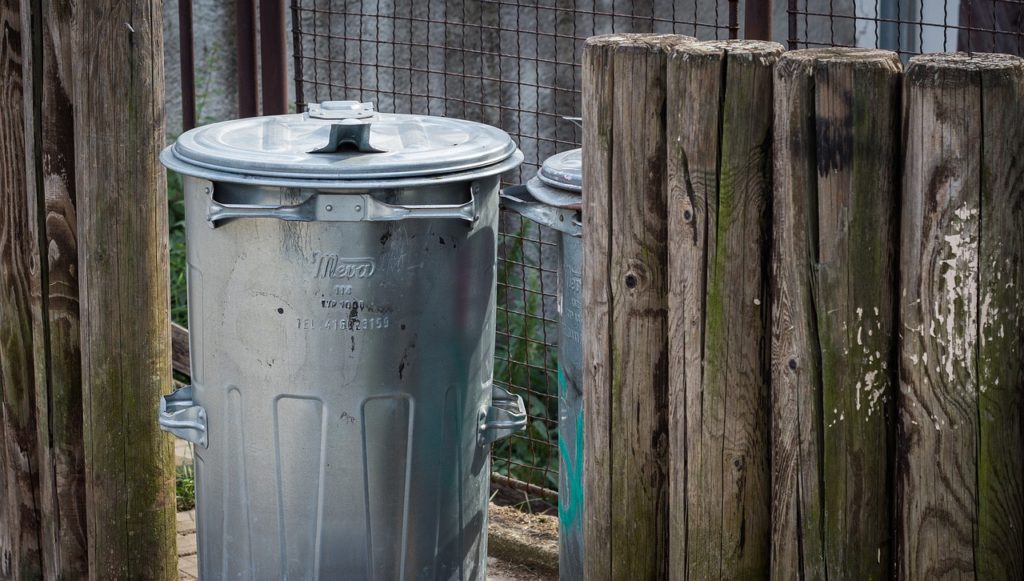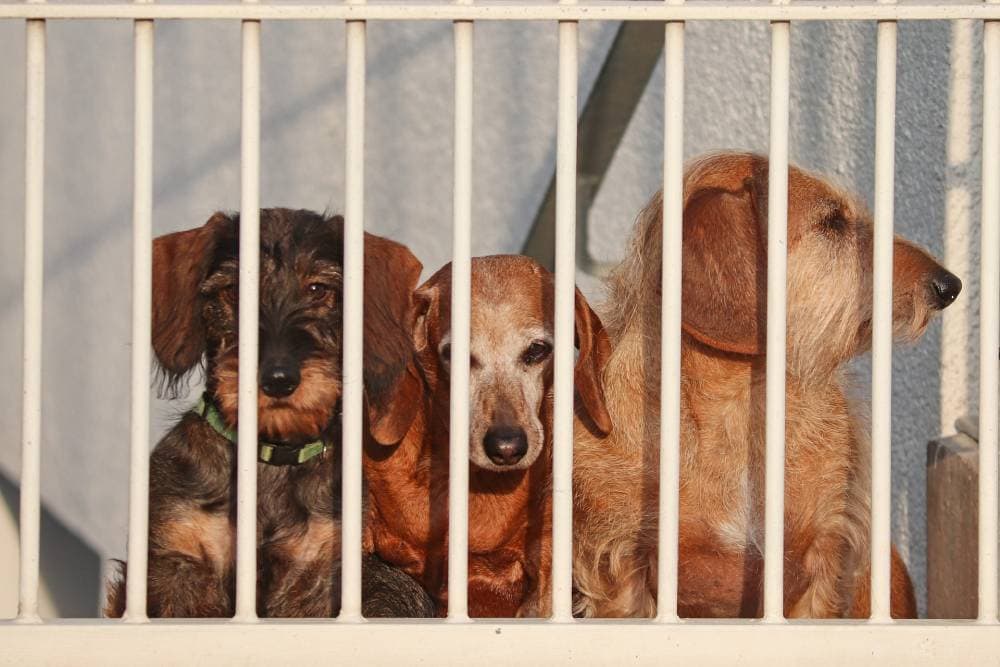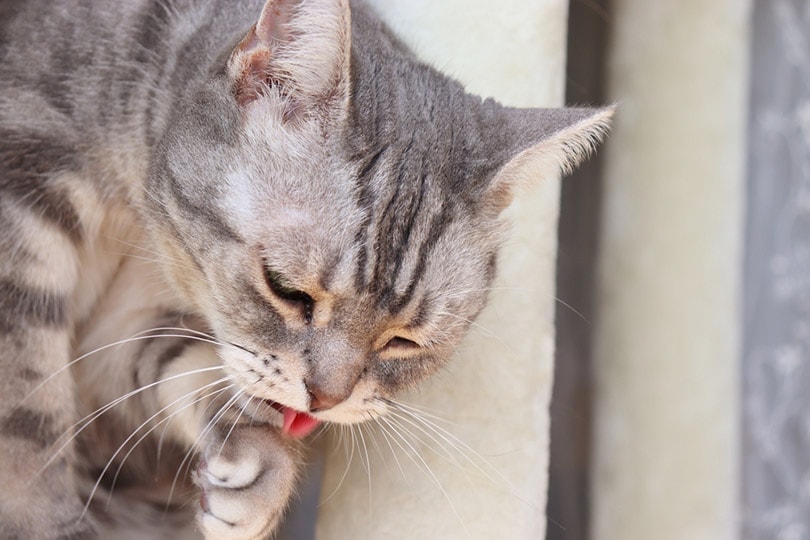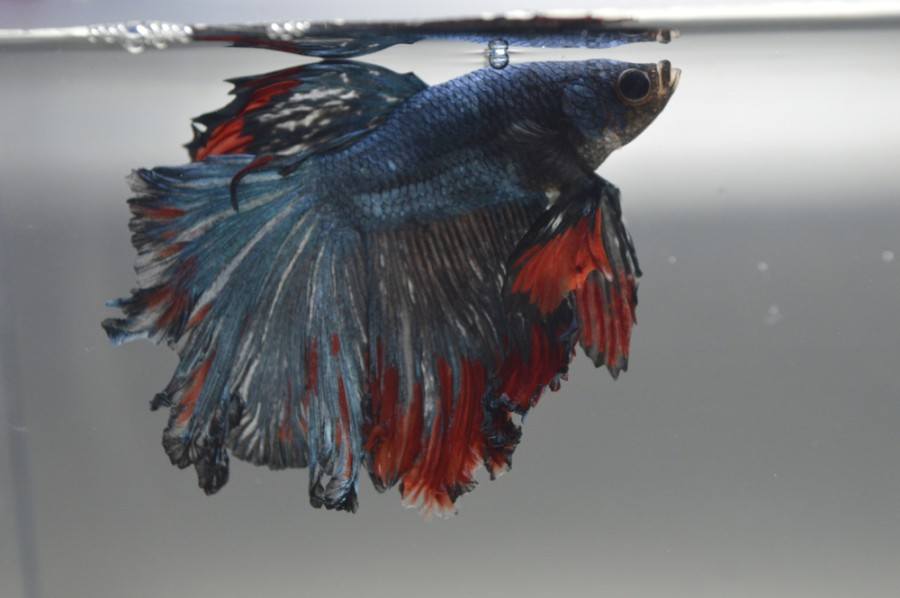Dog Sprayed by a Skunk? Our Vet Explains What to Do

Updated on
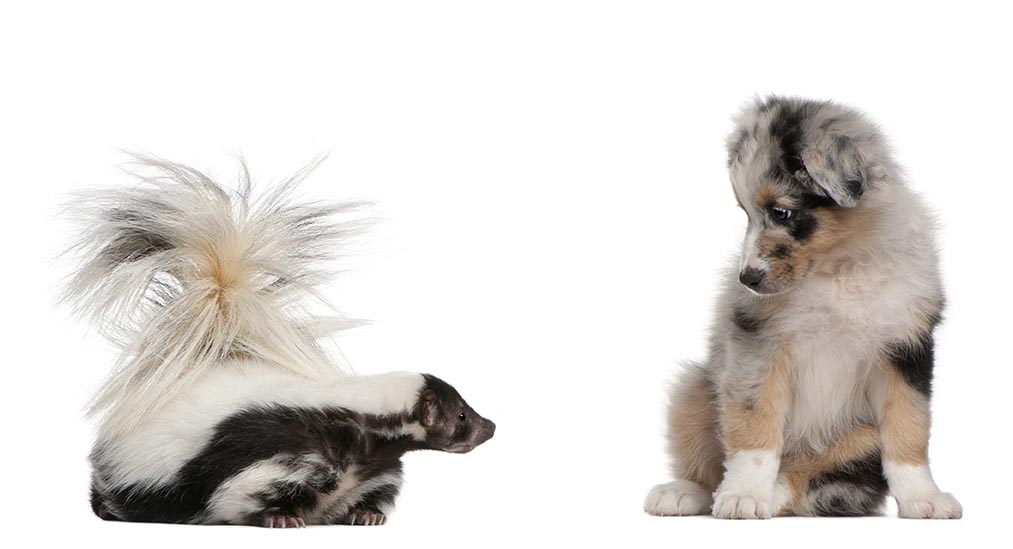
Click to Skip Ahead
Skunks are known for their majestic monochrome stripes, and also their foul stench! Skunks are feared the world over due to their accurate aim with their scent which they can release and drench humans and animals with, even from long range. Humans are good at avoiding skunks, but dogs see them as a stripey playmate and will happily go up to them and get a face full of skunk spray. What do you need to do if this happens to your dog?
Dogs do not usually need immediate veterinary attention if they have been sprayed, however, they do need quick action to decontaminate them depending on where they got sprayed. Their coat will need washing and their eyes and mouth rinsed out thoroughly. This vet-written guide will help you learn what to do in this situation.
The Lowdown on Skunks
Skunks have two anal glands which sit on either side of their rectum underneath their tail. These glands fill up with foul-smelling sulfur-based liquid. These glands have a nipple attached to them and skunks are able to aim the contents of the glands with great force and accuracy. If a skunk is being chased by a predator, it can release the contents in a cloud that the predator is forced to run through. If the skunk is backed into a corner and threatened, they are able to release the liquid in a stream straight into the predator’s face. They can squirt over 10 feet in distance.
The liquid released is made up of smelly sulfur compounds such as thiols and thioacetates. It is a yellow, oily substance that not only smells disgusting but also can irritate your dog’s skin, eyes, nose, and mouth. If your dog gets sprayed, the liquid will stick to its coat, so it is important to attempt to remove it as quickly as possible.

Why Do Dogs Get Sprayed by Skunks?
Dogs are inquisitive creatures and if they encounter a skunk their natural instincts will be to approach them and sniff them. If a skunk is approached by a dog and feels threatened, they will attempt to fend off the dog by spitting and hissing, stamping their feet, or standing on their hind limbs to make themselves appear bigger. If the dog continues to come closer, it will use its skunk spray to attempt to deter the dog from coming too near it. Skunks will often perceive a dog as a threat even if they are not being aggressive or attacking them.
What To Do if Your Dog is Sprayed by a Skunk?
- Separate the dog and the skunk to ensure neither animal gets injured or further interactions between them take place.
- Confine your dog somewhere safe outdoors. Some people panic and rush them inside, this will spread the smell around your house and will make the clean up more difficult.
- Protect yourself. Ensure that you have old clothes on that can be binned afterward or a protective apron, mask, and gloves on so that the spray is not transferred to you.
- Keep children and other animals away from your dog to prevent the transfer of the spray.
- Examine your dog thoroughly for any injuries. Actual fights between dogs and skunks are very rare, usually because the skunk’s spray is its main defense, and when this is released the dog retreats. However, it is still worth checking for any bite marks or scratches. Skunks can carry rabies so ensure your dog is up to date with their rabies vaccinations too. Check your dog’s eyes and mouth as if they got sprayed in the face, they may need rinsing or flushing.
- Try to remove any excess spray sitting on the surface of your dog’s coat. This will prevent it from getting ingested, inhaled, or rubbed into their eyes.
- Shampoo your dog. Either with ready-made skunk shampoo or make your own (see below)
- Monitor your dog closely. If they show any signs of illness or side effects from the skunk spray, it is important to take them to a vet as soon as possible.

How to Remove the Skunk Stench
There are many methods documented on the internet of ways to remove the skunk spray from your dog. Lots of them are old wives’ tales and some can even do more harm than good. It is best to stick to the vet-approved tried and tested methods. Let’s dive in and discuss them.
Commercial Shampoos
The usual shop-bought dog shampoos available are not suitable for getting skunk spray off your dog. There are special skunk shampoos on the market that do the job. These shampoos help to break down the sulfur molecules in the skunk spray and neutralize the foul odor too. Be aware these shampoos are not suitable for everyday use or for washing your dog all over. Keep them at the back of the cupboard for skunk attacks only. Ensure you always read the label and follow the instructions carefully.

Homemade Remedies
If you haven’t got any skunk shampoo at home or can’t get to a shop, you can attempt to make a shampoo at home. The ingredients you will need are 3% hydrogen peroxide, dish soap, and baking soda.
- 1-quart hydrogen peroxide solution
- ¼ cup of baking soda
- 1 teaspoon of dishwashing soap
When combined, the ingredients need to be used immediately and they cannot be premade and stored. Do not put this concoction anywhere near your dog’s eyes and do not allow your dog to lick it. If your dog will tolerate it, keep it on for 5 minutes before rinsing off. Due to the mixture containing hydrogen peroxide, it may bleach fur or clothing, so use it with caution.
What to Do if Your Dog Gets Sprayed in the Eye?
If your dog was unfortunate enough to get a face full it is likely that they will need their eyes rinsing. Skunk spray is extremely irritating to the eyes and causes redness and inflammation which can lead to conjunctivitis if it is not removed from the eye. Saline washes can be used or if you don’t have access to this, simply cooled, boiled water can be used to rinse the eyes out. If your dog’s eyes become red, it is best to take them to your vet to have them checked out.
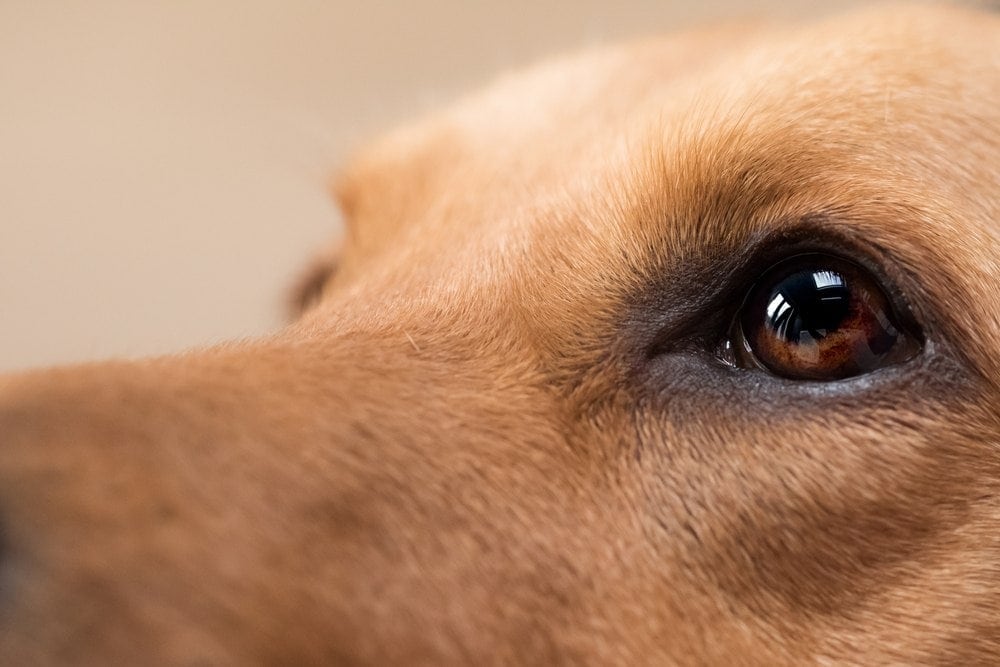
Do I Need to Take My Dog to the Vet?
After a run-in with a skunk, most dogs will be fine as long as they are bathed appropriately and have their eyes washed out if necessary. Some dogs are unfortunate enough to swallow or inhale some of the spray, if this is the case, they may develop a cough or experience gastrointestinal signs such as vomiting and diarrhea. Signs should resolve within 48 hours but if they do not, take your dog to the vet to have them checked out. In very rare cases the chemicals in the skunk spray can cause oxidative damage to circulating red blood cells. This causes anemia. Clinical signs include lethargy, weakness, darker urine, and pale gums. If you see any of these symptoms, take your dog to your vet.
Some vets will be able to bathe your dog for you if you are unable to do it at home, if you are struggling it is always worth asking.
The 5 Ways to Prevent Your Dog Getting Sprayed by a Skunk
You don’t have much control over the skunks in your neighborhood. You can, however, control your environment and your dog to a certain extent. It is possible to deter skunks from coming near your property or entering your garden by doing the following things: Ensure there are no hidey holes around your house that skunks would like to inhabit. Skunks like to nestle under porches, patios, and beneath thick shrubs. Seal up potential entry points and consider putting down chicken wire to secure the perimeter to make it difficult for them to come inside your garden. The main reason skunks come near human homes is to scavenge for food. Ensure that garbage is kept in the trash cans and that they cannot be pushed over or opened easily. Clean up any spillages and don’t leave food outside. Keep your dog’s food indoors away from inquisitive noses. If you have skunks in your garden frequently, it may be time to construct a proper fence around your property to prevent them from entering. The fence does need to be quite substantial, and at least 3 feet tall to prevent the skunk from getting over it. Skunks are most active when the sun has gone down. They are crepuscular creatures, like cats. This means they are more active in the twilight hours. If you avoid letting your dog out at these times, chances are they will avoid an unwanted encounter with a skunk. Skunks feed off vermin such as rats and mice. Ensure you don’t have an infestation and try to control any pest problems. Skunks are very well adapted to fending off potential predators. If your dog has an encounter with a skunk, it is likely it will come off worse. If your dog has been sprayed by a skunk, don’t panic, keep them outside, cover yourself to prevent contamination, and rinse the eyes and mouth if affected. Skunk shampoo is the best option for removing the spray from their coats. Prevention is better than dealing with the spray on your dog, so do everything you can to skunk-proof your home and keep your dog away from skunks. See also:
2. Remove Potential Food Sources
3. Consider a New Fence
4. Keep Your Dog Indoors After Dark
5. Pest Control
Conclusion
Featured Image Credit: Eric Isselee, Shutterstock

